There is something visually jarring about What Miss Mitchell Saw that I just couldn’t put my finger on. When I saw the cover I loved it. In looking through the book there was something that I couldn’t identify that gave me a lukewarm feeling However, after looking at the book a second time I understood what caused that reaction and now see that as one of the bigger positives of the book. What educators, parents and somewhat patient readers will discover is the fascinating story of Maria Mitchell. She was a trailblazing astronomer whose upward gaze and talent awarded a crater on the moon named after her, the discovery of a comet and numerous other scientific accolades.
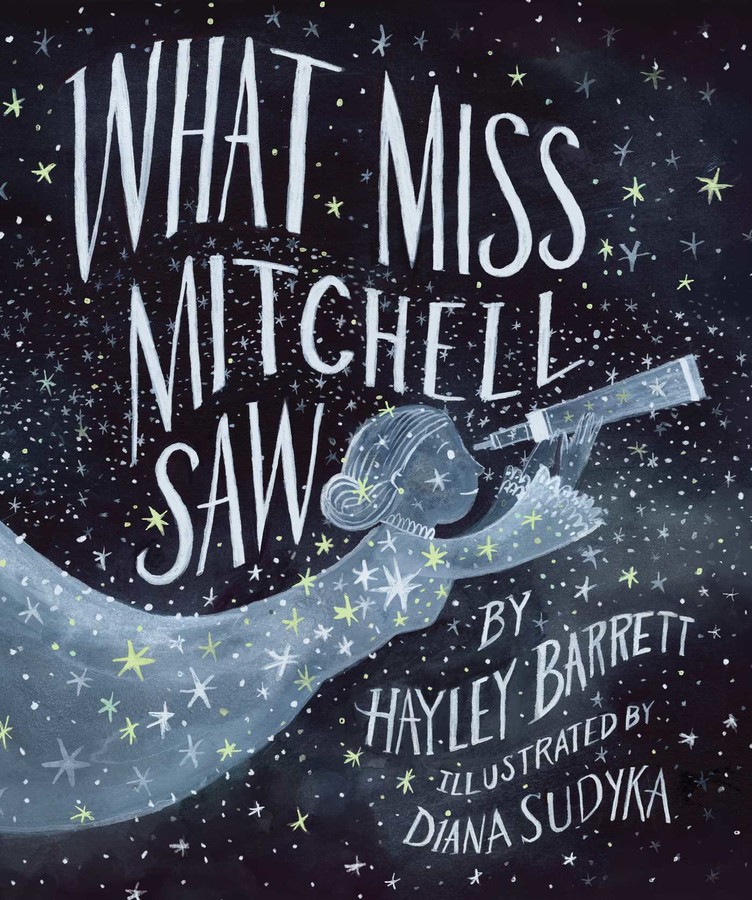
The cover to What Miss Mitchell Saw has a black background with contrasting white font and stars, plus a dozen or so lime green stars. It looks like the sort of thing that would pop if you shined a black light on it. It starts out like most biographical illustrated books with a look at Maria as she’s born and growing up in her home town of Nantucket.
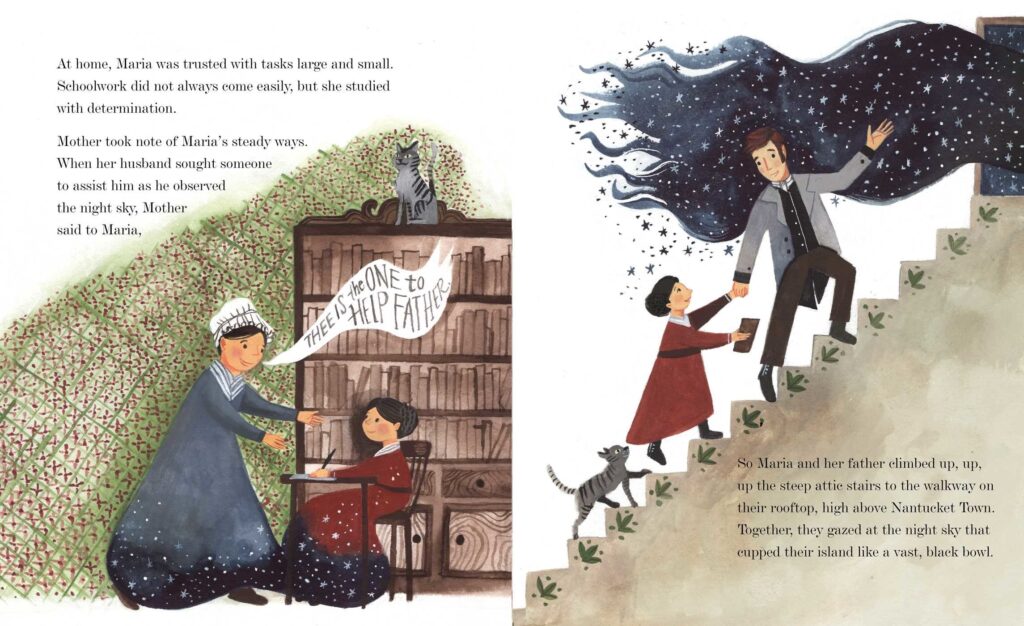
Her father would often watch the night sky and young Maria would accompany him. They also had a shop in town where they rated chronometers; the expensive and precise tools that allow sailors to determine their position while they’re at sea. Maria loved finding stars and exploring the night sky. She was also a very friendly, affable young woman who loved teaching, but yearned for something more.
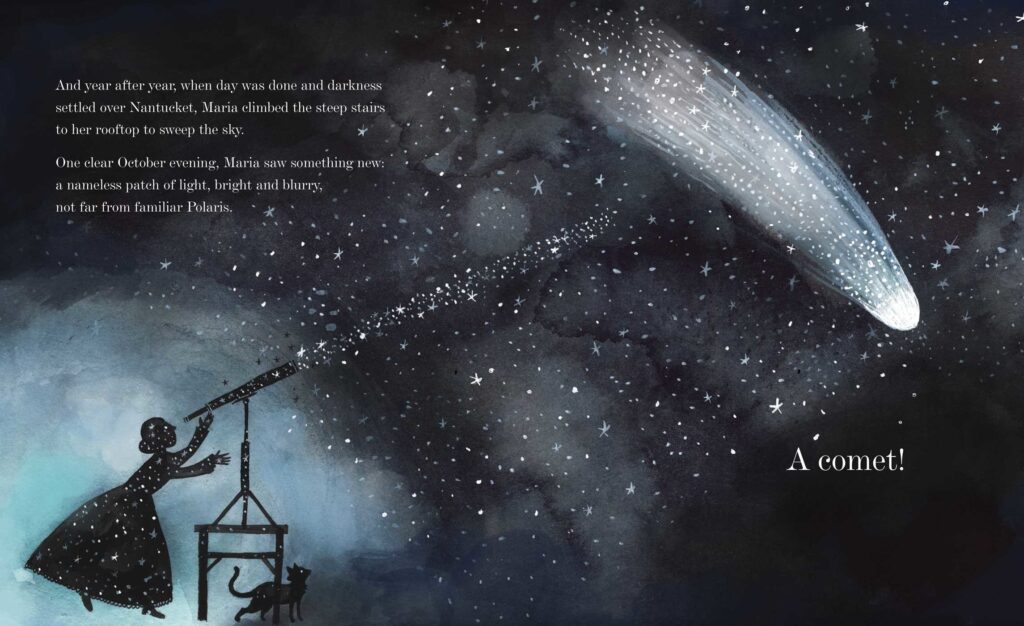
That background sounds like it could be a contemporary tale, doesn’t it? In this case the fairy tale ending is that one night she was watching the sky and saw a comet. Mitchell also knew that the king of Denmark was awarding a gold medal to the first person who identified a new comet. While the gold certainly would be nice, she wanted the glory of discovery also. She immediately sent a letter to the king making him aware of her discovery.
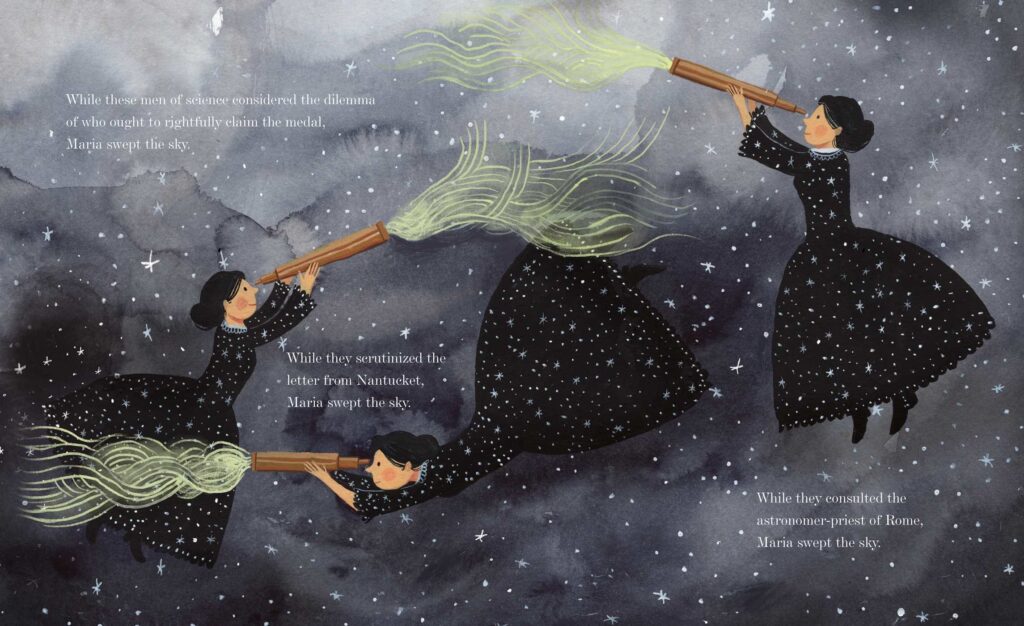
What followed next was a global race of letters, astronomer priests in Rome and conversations by the world’s top scientists. All the while Maria kept looking through the stars. When her award finally arrived it was inscribed with name and the motto, ‘not in vain do we watch the setting and the rising of the stars’.
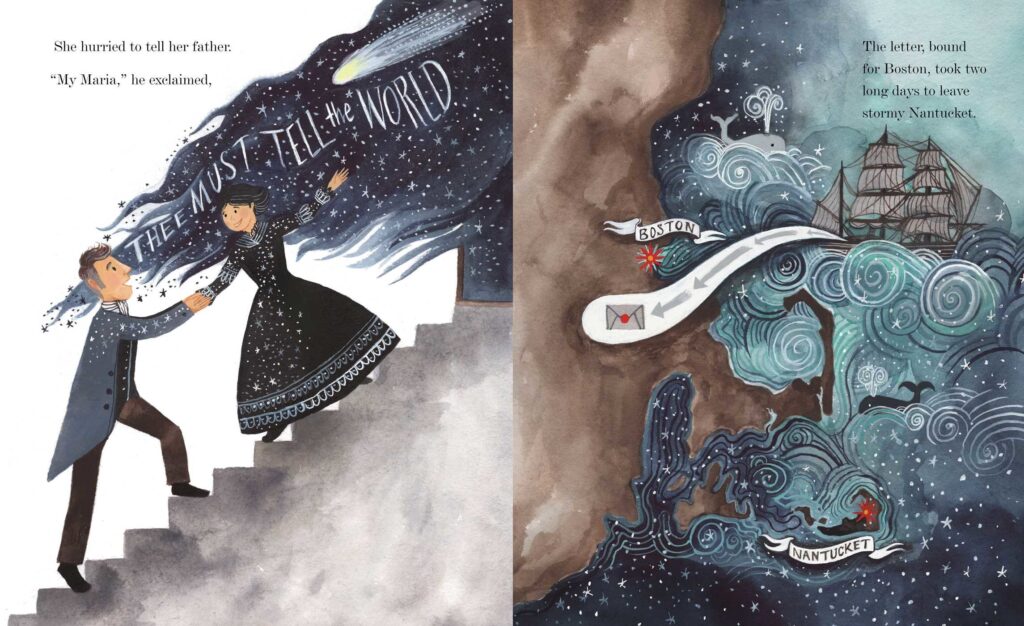
The illustrations and colors in What Miss Mitchell Saw is the undercurrent that drives the story. A majority of the pages are black, with color accents and white font. As we’ve read the book numerous times now I identify more with those pages than the white ones. White is the color background of most illustrated books, so at first it’s a bit alien to look at white font on black background. I find that harder to read and not as enjoyable.
However, in this book it is what makes it pop. That, combined with the dreamy and to-the-point text adds up to a story that will inspire young astronomers, scientists or any kid with a hobby that they love. This is a book that’s effortless to read and gets better the more times that you do so. It’s a must-have for young STEM kids and a great addition to any library.
What Miss Mitchell Saw is by Hayley Barrett with illustrations by Diana Sudyka.
There are affiliate links in this post, because, discovery.

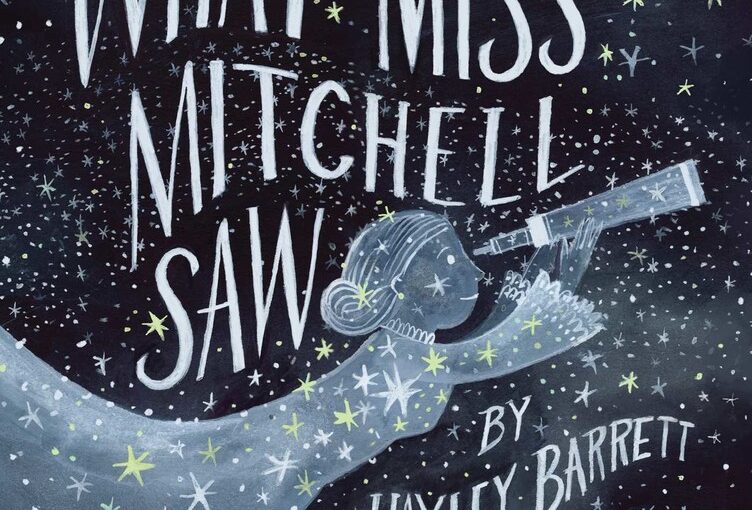



 Facebook
Facebook Twitter
Twitter Flickr
Flickr GooglePlus
GooglePlus Youtube
Youtube